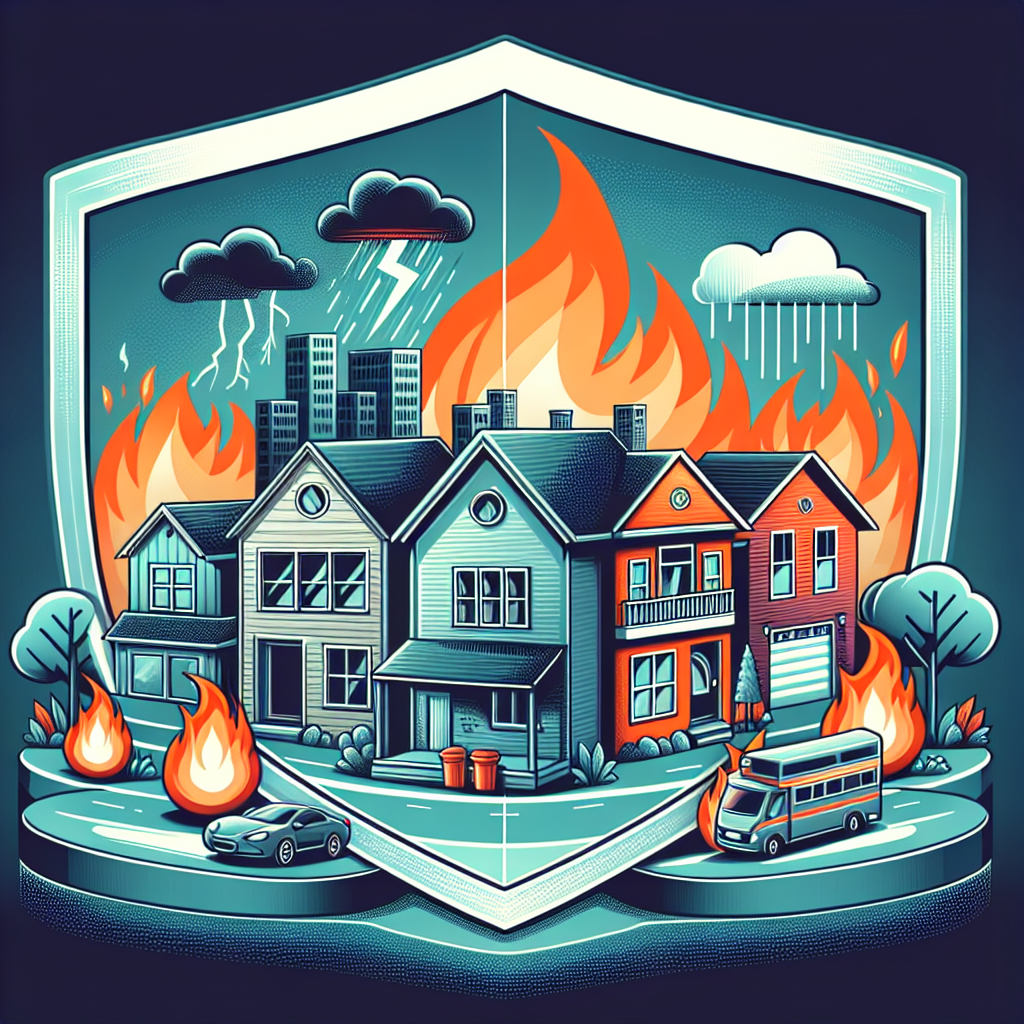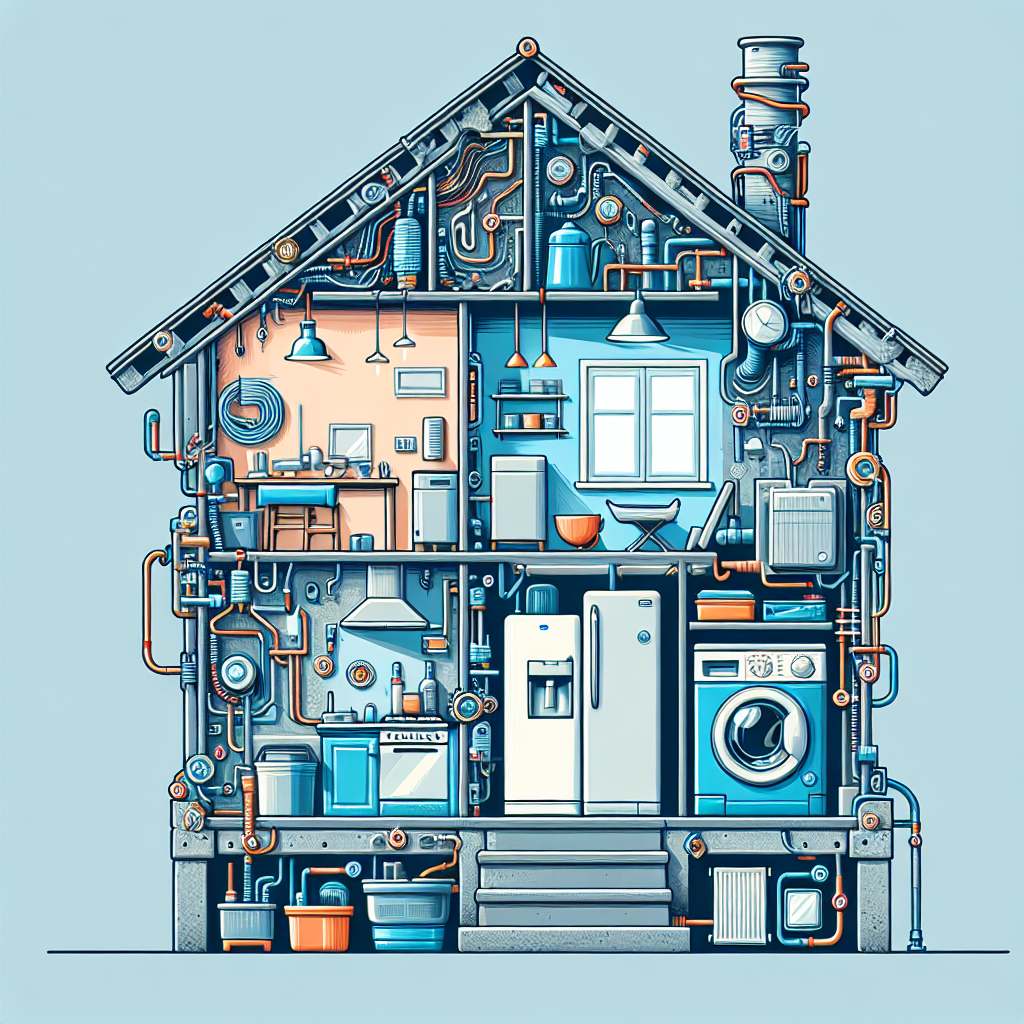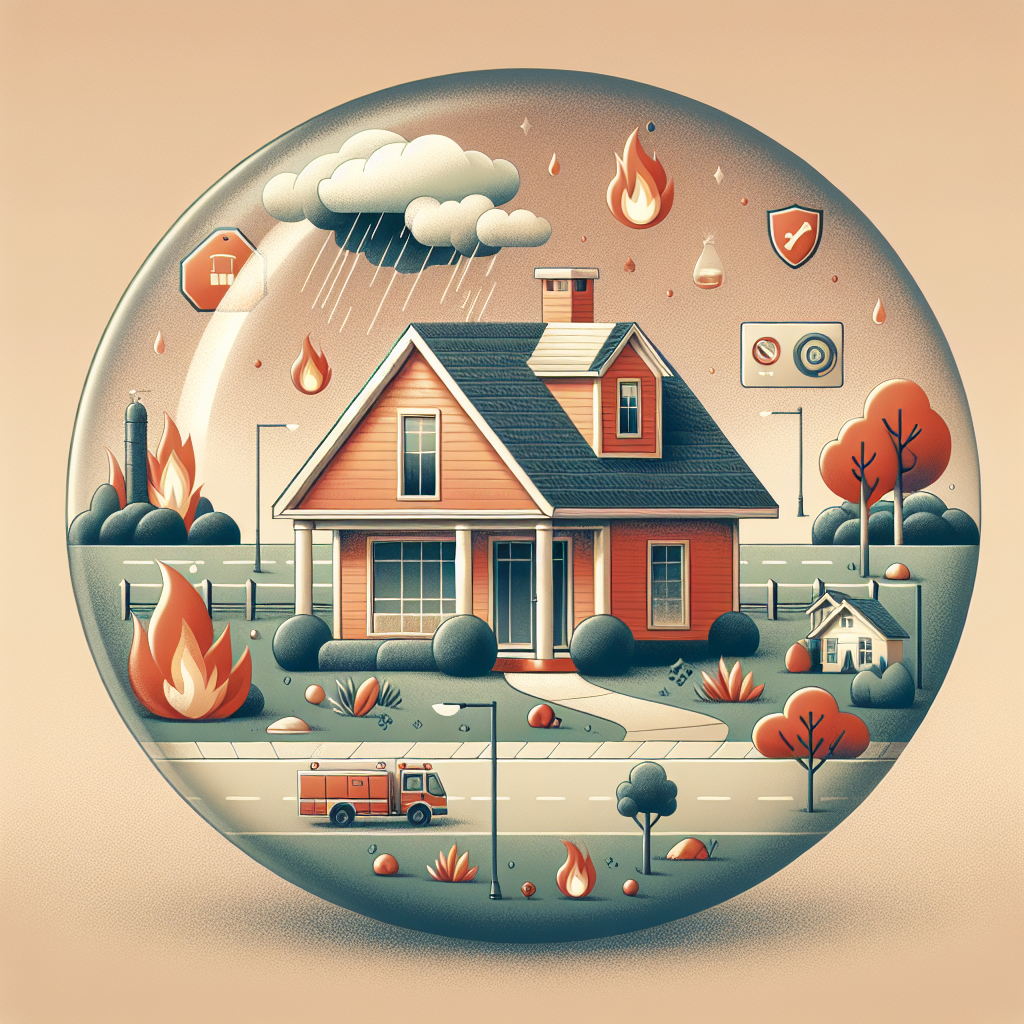Filed under Home Insurance on
What Type of Home Insurance Coverage Do I Need

You work hard for your home. Protecting it shouldn’t feel like decoding a contract written in another language. If you’ve ever asked yourself, What Type of Home Insurance Coverage Do I Need, this guide breaks the decision into clear steps, examples, and practical checklists so you can buy confidently—without overpaying or leaving gaps.
Quick answer: the right coverage in one glance
- Choose a homeowners policy form that matches your property (most detached homes use HO-3; high-value homes often use HO-5; condos use HO-6; landlords use DP forms).
- Set dwelling coverage to the full cost to rebuild your home, not its market value.
- Opt for replacement cost coverage on the home and personal property when possible.
- Start liability at $300,000 or $500,000; consider a $1 million umbrella if you have assets or risk exposure.
- Add endorsements for the risks most likely to affect you (for example: water backup, service line, equipment breakdown, ordinance or law, and scheduled valuables).
- Buy separate flood and earthquake insurance if your exposure warrants it; standard policies exclude these perils.
- Pick a deductible that balances affordability and savings; consider a higher all-perils deductible with special percentage deductibles for wind or hurricane where required.
If you came here wondering, What Type of Home Insurance Coverage Do I Need, this snapshot is your baseline. The sections below explain the why behind each choice.
How homeowners policies are structured
Home insurance is packaged coverage. One policy bundles protection for your house, your belongings, your liability, and your additional living expenses if a covered loss makes the home unlivable. Understanding the policy parts helps you spot what you have—and what you might be missing.
Common policy forms
- HO-3: The most common for single-family homes. It typically covers the structure on an open-perils basis (all risks except those excluded) and your personal property on a named-perils basis unless upgraded.
- HO-5: Often used for newer or higher-value homes. It usually provides open-perils coverage for both the dwelling and personal property and comes with higher built-in limits for certain items.
- HO-1/HO-2: More limited coverage. Less common today, but you may see these on older or price-focused policies.
- HO-4: Renters insurance. Covers personal property and liability for tenants, not the building itself.
- HO-6: Condo or co-op. Covers your unit’s interior, improvements, personal property, loss assessment, and liability.
- HO-7/HO-8: Specialized forms for mobile homes (HO-7) and older, historic, or architecturally unique homes (HO-8).
When people ask, What Type of Home Insurance Coverage Do I Need, the right “HO form” is one of the first decisions to nail down.
The core coverages (A–F)
- Coverage A – Dwelling: Your home’s structure and attached components like a garage or deck.
- Coverage B – Other Structures: Detached items like fences, sheds, and detached garages.
- Coverage C – Personal Property: Your belongings—furniture, clothing, electronics, and more.
- Coverage D – Loss of Use: Additional living expenses if you can’t live at home during repairs.
- Coverage E – Personal Liability: Protection if you’re legally responsible for injuries or property damage to others.
- Coverage F – Medical Payments: No-fault medical coverage for minor guest injuries.
Perils and policy scope
Open perils vs. named perils
Policies either list what’s covered (named perils) or cover everything except listed exclusions (open perils). HO-3 typically provides open-perils coverage for the dwelling and named perils for personal property. HO-5 usually offers open perils for both. Open-perils coverage is broader and can catch unusual losses that named-perils forms might miss.
Major exclusions you should know
- Flood and storm surge: Excluded from standard policies; consider federal or private flood insurance.
- Earthquake and earth movement: Usually excluded; buy a separate policy or endorsement.
- Maintenance issues: Wear and tear, mold, rot, and neglect aren’t insurable events.
- Sewer and drain backup: Typically excluded without a specific endorsement.
- Power failure off premises: Often excluded; equipment breakdown endorsements can help.
- Business activities: Limited coverage unless endorsed; home-sharing can also require special endorsements.
Knowing what isn’t covered is central to answering, What Type of Home Insurance Coverage Do I Need, because the smartest buyers tailor endorsements to close the most likely gaps.
Replacement cost vs. actual cash value
Two terms profoundly affect what you receive after a loss:
- Replacement Cost (RC): Pays to rebuild or replace with new materials of similar kind and quality, up to limits.
- Actual Cash Value (ACV): Pays the depreciated value. You’ll receive less for older roofs, appliances, and furnishings.
RC is the gold standard for both your dwelling and contents; many carriers offer replacement cost for the home by default, but you may need to add an endorsement to get RC on personal property. Note that some policies pay roof claims at ACV unless you add a roof replacement upgrade; read the roof settlement terms carefully, especially in hail- and wind-prone areas.
How much coverage do you need?
Dwelling coverage: insure to rebuild cost
Insure for what it would cost to rebuild your home at today’s prices, not what you paid for the property or what the real estate market says it’s worth. Construction labor and materials can spike; many states have seen double-digit rebuild cost increases in recent years following supply chain disruptions and severe weather losses, according to industry analyses from the Insurance Information Institute and insurers’ internal cost estimators.
- Use a rebuild cost estimator: Your insurer or agent can run a detailed report using your home’s square footage, stories, roof type, exterior, and finishes.
- Adjust for features: Custom cabinets, premium windows, unique stonework, and specialty roofs all add cost.
- Add extended replacement cost or guaranteed replacement: Extended options typically add 10–50% more coverage if costs exceed estimates after a major catastrophe. Guaranteed replacement, when available, removes the cap.
- Include ordinance or law coverage: Pays the extra cost to meet current building codes after a covered loss—critical for older homes.
Other structures: don’t forget the extras
Coverage B is often 10% of Coverage A by default. Increase it if you have extensive fencing, a detached garage, guest house, or large sheds.
Personal property: inventory, then right-size
Coverage C is typically 50–70% of the dwelling limit but should reflect what you actually own. Complete a quick home inventory—photos and a spreadsheet work—to avoid guessing. Expand coverage if you own high-value electronics, musical instruments, or collections.
- Replacement cost for personal property: Add this endorsement if it isn’t standard.
- Know the sublimits: Jewelry, watches, firearms, cash, silverware, and collectibles often have low caps per item and per loss; schedule valuable items for full protection.
Loss of use: the safety net during repairs
Coverage D pays for hotel stays, short-term rentals, meals, and extra commuting when you can’t live at home due to a covered loss. Opt for limits that realistically cover several months in your local rental market.
Liability limits: protect your future earnings
Coverage E handles legal defense and settlements if you’re sued for injuries or property damage. Because legal costs and jury awards can be substantial, many financial planners suggest starting at $300,000–$500,000, then adding a personal umbrella liability policy for an extra $1–$5 million if you have a home, savings, or high income to protect. Dog ownership, a pool, trampoline, short-term rentals, or frequent entertaining may justify higher limits.
Medical payments: goodwill coverage
Coverage F is small, usually $1,000–$5,000, to pay minor guest injuries regardless of fault. It can diffuse tensions and prevent small issues from becoming lawsuits.
Deductibles: your skin in the game
A higher deductible lowers your premium but increases out-of-pocket costs. Many homeowners choose $1,000–$2,500. In coastal or hail-prone regions, you may see separate wind, hail, or hurricane deductibles expressed as a percent of the dwelling limit (for example, 1–5%). Balance savings against your emergency fund and local risk.
Add‑ons and endorsements worth considering
- Water backup and sump overflow: Covers damage if a drain, sewer line, or sump pump backs up into your home.
- Service line: Pays to repair underground water, sewer, or electrical lines between your house and the street.
- Equipment breakdown: Covers sudden failure of HVAC, appliances, and major systems; can include surge damage.
- Ordinance or law: Funds code upgrades after a covered loss.
- Extended or guaranteed replacement cost: Adds cushion if rebuild costs spike.
- Scheduled personal property: Itemizes jewelry, art, bicycles, cameras, instruments, or collectibles for agreed values and broader perils with low or no deductible.
- Identity theft and cyber: Provides restoration services and certain expense coverage.
- Home-sharing or rental: Essential if you list rooms or the entire home on short-term rental platforms.
- Green rebuild: Pays to upgrade to energy-efficient materials after a loss.
- Matching siding or roof: Helps replace undamaged materials so repairs match the rest of the home.
- Wildfire or wind mitigation endorsements: Some carriers offer specialized coverage or discounts for hardened homes.
As you refine your plan, keep asking, What Type of Home Insurance Coverage Do I Need, given my unique risks? Endorsements are how you personalize a mass-market policy.
Special situations: condos, rentals, and unique homes
Condos and co-ops
HO-6 policies cover your interior walls, floors, ceilings, built-ins, and personal property. Review your association’s master policy (all-in vs. bare walls) to avoid overlaps and gaps. Consider loss assessment coverage in case the association levies a special assessment after a covered loss.
Landlords and second homes
Dwelling policies (DP-3 is common) cover rental properties. They typically include the structure, lost rent after a covered loss, and liability, but not tenants’ belongings. Screening, lease requirements, and safety features (like smart water sensors) can earn underwriting approval and discounts.
High-value and historic homes
Homes with custom architecture, rare materials, or high-end finishes benefit from HO-5 or specialty carriers offering broader coverage, higher sublimits, risk consulting, and guaranteed replacement cost. Historic properties often need higher ordinance or law coverage and a carrier comfortable with specialty trades.
New builds and resilient retrofits
Carriers increasingly reward resilient construction—impact-rated windows, fortified roofs, sealed soffits, and ember-resistant vents. Programs inspired by the Insurance Institute for Business & Home Safety’s FORTIFIED standards can unlock premium credits and reduce loss severity.
Flood and earthquake: the big exclusions
Standard home insurance excludes flood and earth movement. Yet these risks are not limited to traditional hotspots. Inland flash flooding, snowmelt, and induced seismicity have expanded exposure in recent years, according to emergency management agencies and catastrophe modeling reports.
- Flood insurance: Available through the National Flood Insurance Program and private markets. Private policies may offer higher limits and additional coverages; NFIP is widely accessible. Even low-risk zones see claims—consider coverage if heavy rain, nearby creeks, or poor drainage concern you.
- Earthquake insurance: In places like California, dedicated policies or endorsements are common; in other regions, you can add earthquake coverage from participating carriers or specialty insurers. Deductibles are percentage-based and higher than standard deductibles.
For many households evaluating, What Type of Home Insurance Coverage Do I Need, the honest answer includes separate flood or earthquake coverage, even outside high-profile zones.
Pricing trends and what drives your premium
Rates have risen in many states due to higher reinsurance costs, inflation in building materials, and an uptick in severe weather events. Underwriters price to the home’s characteristics and your loss history. Factors include:
- Location: Distance to fire services and hydrants, local wildfire or hail risk, and historical loss data.
- Construction: Roof age and type, wiring, plumbing, and security features.
- Claims: Prior losses can affect eligibility and discounts.
- Coverage choices: Higher limits and broader endorsements increase premiums; higher deductibles reduce them.
- Credit-based insurance scores: Used in many states; maintaining strong credit can lower costs where allowed.
Ways to save without weakening protection
- Bundle home and auto: Often 10–25% savings and better eligibility for endorsements.
- Increase deductibles thoughtfully: Step up to a level your emergency fund can handle.
- Mitigate risks: Install monitored alarms, smart water shutoff valves, and hail- or impact-resistant roofing. Insurers and research groups have shown these reduce loss frequency and severity.
- Maintain your home: Replace aging roofs and update electrical and plumbing to reduce both risk and premium.
- Ask for all discounts: Claims-free, new roof, protective devices, gated community, and senior discounts may apply.
- Shop at renewal: Compare multiple carriers annually, especially after major life or home changes.
How claims work—and how to be ready
Before a loss
- Document your home: Keep photos or video of each room, receipts for big purchases, and serial numbers for electronics.
- Store records safely: Save copies in the cloud or off-site.
- Know your policy: Note your deductibles, special deductibles (wind/hail), and key endorsements.
After a loss
- Protect the property: Prevent further damage if safe to do so.
- File promptly: Call your carrier and follow their process; keep your claim number handy.
- Track everything: Save receipts for temporary repairs, lodging, and meals; photograph damage before cleanup.
- Work with adjusters: Be available for inspections; share your inventory and estimates.
- Understand payment stages: Initial ACV payment may be followed by recoverable depreciation after repairs are complete—especially with replacement cost policies.
- Dispute professionally: If settlements seem low, request a reevaluation, provide competing estimates, or use the policy’s appraisal process.
Common mistakes to avoid
- Insuring to market value: You need the rebuild cost, not the listing price.
- Forgetting special items: Jewelry, art, and collectibles need scheduled coverage to be fully protected.
- Skipping water backup: One of the most frequent and costly uncovered losses without the endorsement.
- Accepting ACV on the roof without realizing it: Check settlement terms before hail season.
- Underestimating loss of use: Local rental markets can be tight after catastrophes; pick realistic limits.
- Not updating coverage after renovations: Kitchen upgrades and additions can outpace your limits.
A step-by-step checklist to choose the right policy
- Identify your policy form: HO-3 or HO-5 for most owner-occupied homes; HO-6 for condos; DP for rentals.
- Calculate rebuild cost: Use your insurer’s estimator; add extended or guaranteed replacement if available.
- Set other structures and contents: Adjust Coverage B and C to match your property and belongings.
- Upgrade to replacement cost on contents: Avoid depreciation where possible.
- Right-size liability: At least $300,000–$500,000; consider an umbrella policy if you have assets or heightened risk.
- Add critical endorsements: Water backup, service line, equipment breakdown, ordinance or law, and scheduled valuables.
- Decide on deductibles: Balance savings against your emergency fund; watch for separate wind or hurricane deductibles.
- Evaluate excluded perils: Purchase flood and earthquake policies or endorsements based on your location and risk tolerance.
- Ask about discounts: Bundles, mitigation credits, new roof, and protective devices.
- Review annually: Update limits after renovations and major purchases; revisit insurers if rates change.
Use this checklist whenever you revisit the question, What Type of Home Insurance Coverage Do I Need, especially after remodeling or life changes.
Frequently asked questions
Is market value ever a good proxy for coverage?
No. Market value includes land and fluctuates with interest rates and demand. Your policy should be grounded in reconstruction cost—labor, material, permits, and code upgrades.
How do I know if I need flood insurance?
Check topography, proximity to water, drainage quality, and local flood history. Many flood claims occur outside high-risk zones. If heavy rainfall or poor drainage worry you, consider a policy even if your lender doesn’t require it.
Should I choose HO-3 or HO-5?
HO-5 is broader and often includes higher limits for certain items, but it can cost more and may be reserved for newer or well-maintained homes. If the price difference is modest, HO-5’s open-perils protection on contents can be worth it.
What’s a reasonable deductible?
Pick the highest deductible you can comfortably pay out-of-pocket. For many, that’s $1,000–$2,500. In coastal or hail regions, expect special percentage deductibles for wind or hurricane events.
Do smart-home devices really help?
Yes. Monitored security, water leak sensors with automatic shutoff, and temperature monitors can reduce both loss severity and premiums. Some insurers provide device credits or subsidized equipment.
Putting it all together
Home insurance should evolve with your life. Renovations, new belongings, short-term rentals, and local risk changes all affect your ideal setup. If you keep circling back to the question, What Type of Home Insurance Coverage Do I Need, remember that the best policy is comprehensive but tailored: insured to full rebuild cost, upgraded with the right endorsements, backed by strong liability limits, and paired with targeted flood or earthquake coverage where necessary.
Before you renew, take 15 minutes to walk through your home, update your inventory, and compare quotes from at least two reputable carriers. Ask each agent to explain how they calculated rebuild cost, whether your roof is paid at replacement cost, and which endorsements they recommend for your ZIP code. A few thoughtful choices now can make a life-changing difference later.
Ultimately, the clearest path to answering, What Type of Home Insurance Coverage Do I Need, is to weigh your unique risks against the policy’s structure and exclusions, then fill the gaps with smart add-ons. Do that, and you’ll own a policy designed for real life—not just paperwork.





